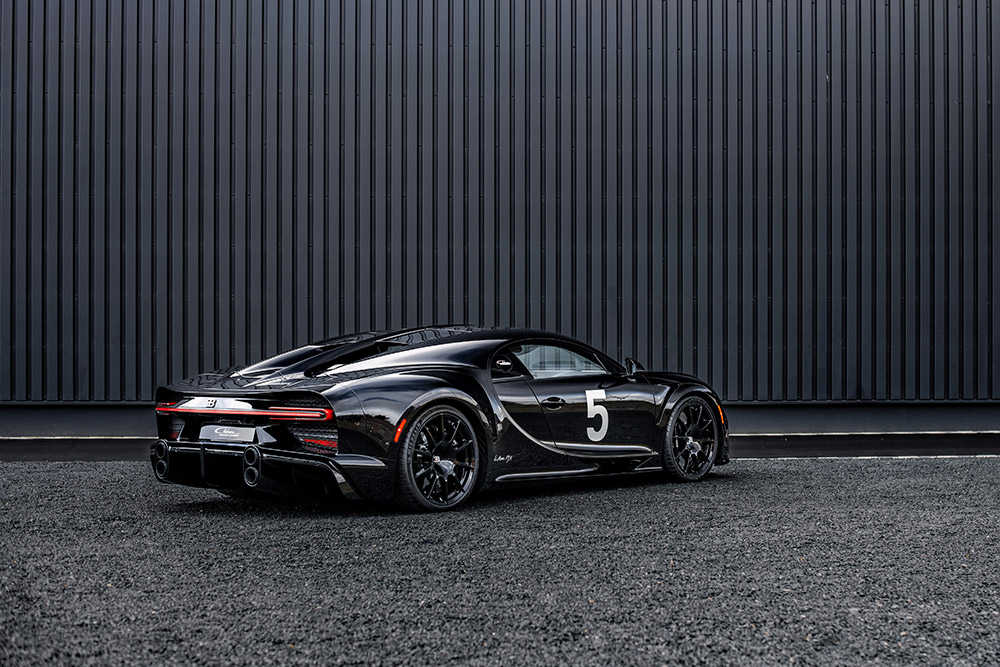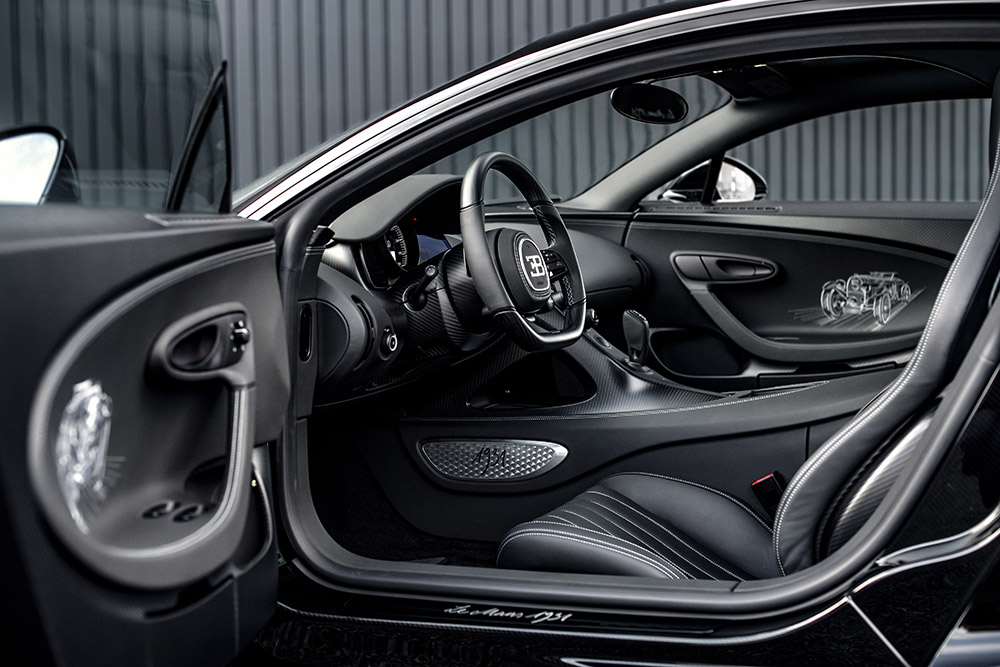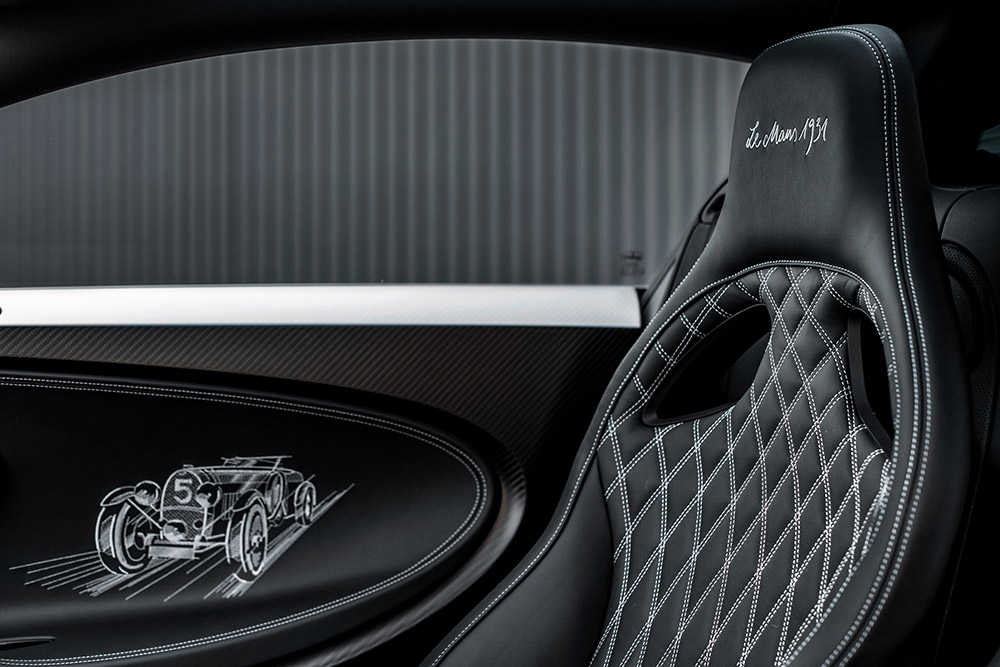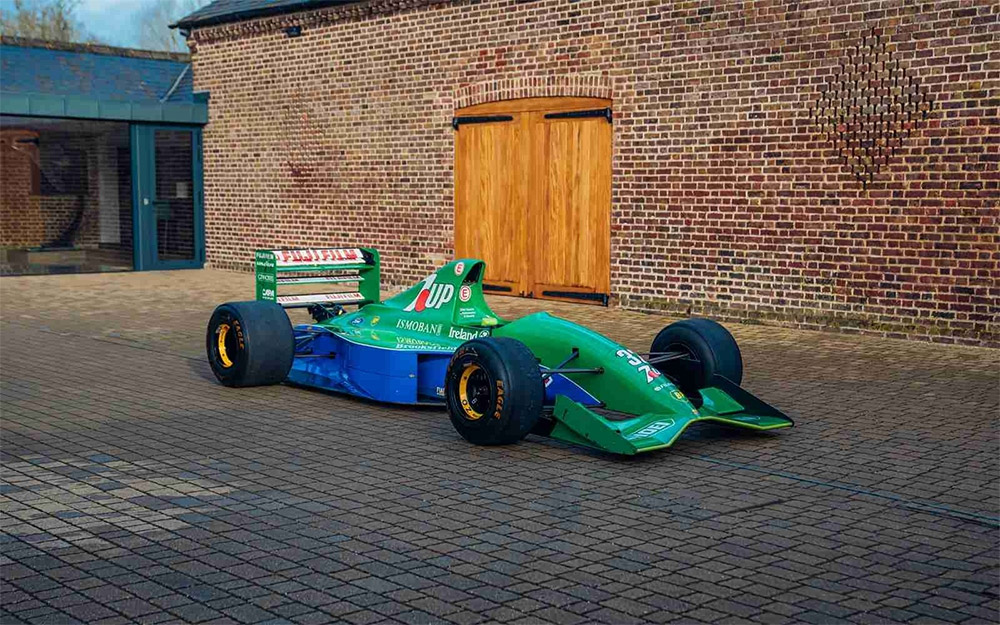In 1937, Bugatti won the 24 Hours of Le Mans for the very first time with the Type 57G Tank. But six years earlier, the brand made its official factory debut at the legendary race with a car that would give both Ettore and Jean Bugatti a taste of the thrill of the Circuit de la Sarthe. This pioneering creation – the Type 50S – has inspired Bugatti’s latest Sur Mesure car: the Chiron Super Sport “Hommage T50S”.
During his visit to the home of the brand in Molsheim and following a discussion with Bugatti’s lead Sur Mesure designer, Jascha Straub, the customer explained that he wanted a black-on-black Chiron Super Sport¹ that could appropriately celebrate Bugatti history. This is when he became enchanted with the story – and the legend – of the Type 50S.

Deriving its essence from the celebrated Type 46, the Type 50S represented the pinnacle of Bugatti’s large-capacity engine lineage. Where Bugatti had previously had success with lightweight, nimble racing cars like the Type 35, the late ‘20s and early ‘30s were an arms race of pure power-focused performance. Bugatti’s innovation in this arena was a new five-liter supercharged eight-cylinder engine – its first engine with a dual overhead camshaft – producing around 250 PS.
Fitting this revolutionary engine to the Type 50S created the ultimate road car; comfortable and luxurious, as well as sleek and stylish but with the kind of performance expected from contemporary racing cars. Such was the potential of the Type 50S, that Jean Bugatti believed it could take on the most grueling motor race in the world – the 24 Hours of Le Mans – and win.

Bugatti entered three separate chassis into the 1931 race, each one finished entirely in black − rather than the traditional French racing blue − as a subtle barb at the French government who refused to sponsor the endeavor, but it also worked as a visual metaphor for a new approach to motor racing for Bugatti.
The entire set of three cars showed enormous potential, with thunderous speed down the long straights. With a victory looking possible, one of the entries suffered a tire failure at high speed and tragically crashed off the circuit. The two remaining cars – including chassis no. 50177 which inspired this modern-day Super Sport homage – were retired by Bugatti to avoid any further accidents.
The story of 50177, which was graced with the number ‘5’ as it raced at Le Mans in 1931, was the catalyst that sparked the basis of a creative journey for both the customer and Jascha as a vision for the Chiron Super Sport formed in their minds and began to come to life on paper.

The bold, upright grille with its repeating square pattern – complete with painted number ‘5’ in the center – became the focal point of the frontal redesign. The Chiron Super Sport’s grille was reimagined with a nod to the historic car, adopting a similar design that is relentlessly engineered for all the aerodynamic and cooling requirements of a car capable of travelling at 440 km/h.
Just like the original, this Sur Mesure creation is finished in a dark and lustrous black, with a contrasting ‘5’ painted on both sides of the car. ‘Le Mans 1931’ script sits just ahead of the rear wheel arch, and a representation of the Circuit de la Sarthe – every twist, turn and straight laid out exactly as the Type 50S would have seen it in 1931 – is hidden on the underside of the rear spoiler, both meticulously designed and applied by the Bugatti experts.
Core to the Type 50S experience was its innovative dual-overhead cam engine, housed within an engine bay almost as beautiful as the car itself. Completed with an engine-turned ornamental pattern known as “Perlée”, this kind of attention-to-detail was a hallmark of the Bugatti brand, and Ettore Bugatti himself. Jascha and the customer obsessed over this detail, perfectly embodying the ethos of the brand – beauty in every detail.

The process of recreating the engine-turned look to a standard that satisfies the Sur Mesure team’s no-compromise approach to quality was far from straightforward. Each circular pattern had to overlap to exactly the same extent, every aspect of its design had to be perfectly proportional and designed to withstand extreme heat and everyday wear for not simply years, but decades and generations. As with every aspect of a Sur Mesure commission, what seems to be simple is actually the result of a long and complex process that ensures a perfect finish time after time.
Visible on both the engine covers, the “Perlée” finish emanates throughout the car as a constant visual reminder of its inspiration. A storage area within the center console is now completed with the meticulously crafted engine-turned material, inscribed with ‘Le Mans 1931’, and the knee protectors either side of the console mimic the pattern, combined with an outline of the Circuit de la Sarthe.
The black interior – highlighted by flashes of aluminum and “Perlée” – is brightly illuminated by the optional Sky View glass roof, giving occupants a taste of the open-air thrill of the original Type 50S. That same original car is recreated in a hand-applied representation of its exploits at Le Mans on each of the door panels, while ‘Le Mans 1931’ is hand-stitched into both driver and passenger headrests.

“The Type 50S lineage helped established Ettore and Jean’s pioneering vision in the early 1930s for powerful, large-engine-capacity Bugatti race cars operating at the extreme end of high-performance,” said Jascha Straub, Lead Designer Sur Mesure. “The Type 50S – and particularly chassis 50177 – are core parts of our history. Having a customer so passionate in his desire to pay homage to this racing legend is a real privilege. He and I spoke for hours, over many months, about the ways that we could create an authentic tribute, obsessing over every detail to ensure it was consistent with the Type 50S story, but also completed to the incomparable standards of the Bugatti brand.”
Hendrik Malinowski, Managing Director, Bugatti Automobiles, said: “It may not have the reputation of the Atlantic, the Royale or the Type 35 but we managed to share our excitement for this car with the customer who recognized the importance of the Type 50S. Once again, the Sur Mesure team led by Jascha Straub has delivered an exceptionally personal project of co-creation, utilizing the passion of our customer, the insight of our experts and the skill of our craftspeople in the creation of a love letter to the iconic Type 50S. It’s not just a modern-day design homage but a continuation of a story that began nearly a century ago.”
Bugatti Automobiles would like to thank the Stiftung Nationales Automuseum – The Loh Collection in Dietzhölztal, Germany, for the generous loan of the original Bugatti Type 50S chassis 50177 photoshot along with the Chiron Super Sport “Hommage T50S” on its premises. The Loh Collection charts 135 years of automotive history through the display of 150 rare and beautiful cars, including a number of extraordinary Bugatti models. As well as this important piece of Bugatti racing history, the Loh Collection also houses the captivating Type 57C Aravis, Type 57C Atalante and Veyron Super Sport. Visit www.nationalesautomuseum.de to discover more.







